
Harriet A. Brown (February 20, 1847 - 1930) was an inventor who patented "The Harriet A. Brown system," a dress cutting and making system.

Harriet A. Brown (February 20, 1847 - 1930) was an inventor who patented "The Harriet A. Brown system," a dress cutting and making system.
Harriet A. Brown was born in Augusta, Maine, on February 20, 1847. She was of Scotch parentage. [1]
By contact with working girls Harriet A. Brown learned of the long hours, hard work and small wages of which most of them complained, and her ardent desire was to alleviate their distress. Brown conceived the idea of establishing a regular school of training for women who desired to make themselves self-supporting, and, on the solicitation of many prominent and philanthropic women of Boston, she opened the Dress-Cutting College in that city on October 17, 1886. In opening her college, she had the cooperation of those who induced her to establish such a school in Boston, but the underlying ideas, the scientific rules for dress-cutting, the patented system used, and all the methods of instruction, were her own. [1]
The chief aim of the institution was to be one in which girls of ability and taste, who were engaged in stores, workshops and kitchens, could find employment for which they were better adapted. Brown's system of cutting was the result of years of study. All its points she had thoroughly mastered, and had succeeded in patenting rules for cutting, and also obtained the only patent for putting work together. [1]
She received numerous medals and diplomas as testimonials of the superiority of her methods, and her system was used the leading industrial schools and colleges of the country. Delegates from the Pratt Institute, Brooklyn, New York, after investigating all the principal European methods, adopted Brown's system. It was one of the regular features of the Moody Schools, Northfield, Massachusetts, where young women were educated for missionary work. [1]
Brown was an occasional contributor to the newspaper press. [1]
In 1902 she wrote "Scientific dress cutting and making, "The Harriet A. Brown system," simplified and improved; directions for its use". [2]
Harriet A. Brown married Albert G. Brown (1848-1935) and had two children: Walter G. (1871-1872) and Clara G. (1886-1895). She died in 1930 and is buried at Brown Cemetery, Voluntown, New London, Connecticut.

Harriet Elisabeth Beecher Stowe was an American author and abolitionist. She came from the religious Beecher family and became best known for her novel Uncle Tom's Cabin (1852), which depicts the harsh conditions experienced by enslaved African Americans. The book reached an audience of millions as a novel and play, and became influential in the United States and in Great Britain, energizing anti-slavery forces in the American North, while provoking widespread anger in the South. Stowe wrote 30 books, including novels, three travel memoirs, and collections of articles and letters. She was influential both for her writings as well as for her public stances and debates on social issues of the day.
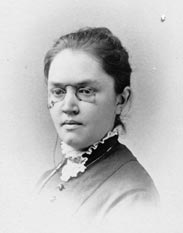
Katharine Lee Bates was an American author and poet, chiefly remembered for her anthem "America the Beautiful", but also for her many books and articles on social reform, on which she was a noted speaker.

Margaret Eloise Knight was an American inventor, notably of a machine to produce flat-bottomed paper bags. She has been called "the most famous 19th-century woman inventor". She founded the Eastern Paper Bag Company in 1870, creating paper bags for groceries similar in form to the ones that would be used in later generations. Knight received dozens of patents in different fields, and became a symbol for women's empowerment.

Catharine Esther Beecher was an American educator known for her forthright opinions on female education as well as her vehement support of the many benefits of the incorporation of kindergarten into children's education. She published the advice manual The American Woman's Home with her sister Harriet Beecher Stowe in 1869. Some sources spell her first name as "Catherine".

Harriet Ann Boyd Hawes was a pioneering American archaeologist, nurse, relief worker, and professor. She is best known as the discoverer and first director of Gournia, one of the first archaeological excavations to uncover a Minoan settlement and palace on the Aegean island of Crete. She was also the second person to have the honor of the Agnes Hoppin Memorial Fellowship bestowed upon her, and the very first female archeologist to speak at the Archaeological Institute of America.
Erna Schneider Hoover is an American mathematician notable for inventing a computerized telephone switching method which "revolutionized modern communication". It prevented system overloads by monitoring call center traffic and prioritizing tasks on phone switching systems to enable more robust service during peak calling times. At Bell Laboratories where she worked for over 32 years, Hoover was described as an important pioneer for women in the field of computer technology.

Katharine Burr Blodgett was an American physicist and chemist known for her work on surface chemistry, in particular her invention of "invisible" or nonreflective glass while working at General Electric. She was the first woman to be awarded a PhD in physics from the University of Cambridge, in 1926.

Antoinette Louisa Brown, later Antoinette Brown Blackwell, was the first woman to be ordained as a mainstream Protestant minister in the United States. She was a well-versed public speaker on the paramount issues of her time and distinguished herself from her contemporaries with her use of religious faith in her efforts to expand women's rights.
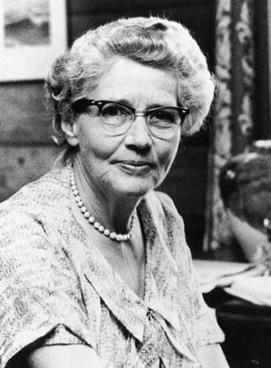
Helen Brooke Taussig was an American cardiologist, working in Baltimore and Boston, who founded the field of pediatric cardiology. She is credited with developing the concept for a procedure that would extend the lives of children born with Tetralogy of Fallot. This concept was applied in practice as a procedure known as the Blalock-Thomas-Taussig shunt. The procedure was developed by Alfred Blalock and Vivien Thomas, who were Taussig's colleagues at the Johns Hopkins Hospital.

Ellen Day Hale was an American Impressionist painter and printmaker from Boston. She studied art in Paris and during her adult life lived in Paris, London and Boston. She exhibited at the Paris Salon and the Royal Academy of Arts. Hale wrote the book History of Art: A Study of the Lives of Leonardo, Michelangelo, Raphael, Titian, and Albrecht Dürer and mentored the next generation of New England female artists, paving the way for widespread acceptance of female artists.

Anne Whitney was an American sculptor and poet. She made full-length and bust sculptures of prominent political and historical figures, and her works are in major museums in the United States. She received prestigious commissions for monuments. Two statues of Samuel Adams were made by Whitney and are located in Washington, D.C.'s National Statuary Hall Collection and in front of Faneuil Hall in Boston. She also created two monuments to Leif Erikson.
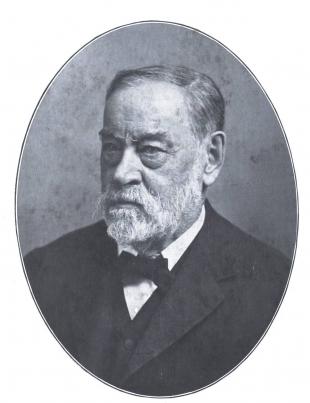
William Ford Robinson Stanley was a British inventor with 78 patents filed in both the United Kingdom and the United States of America. He was an engineer who designed and made precision drawing and mathematical instruments, as well as surveying instruments and telescopes, manufactured by his company "William Ford Stanley and Co. Ltd."
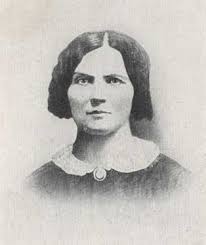
Sarah Hopkins Bradford was an American writer and historian, best known today for her two pioneering biographical books on Harriet Tubman. Most of her work consists of children's literature.

Elizabeth Okie Paxton (1878–1972) was an American painter, married to another artist William McGregor Paxton (1869–1941). The Paxtons were part of the Boston School, a prominent group of artists known for works of beautiful interiors, landscapes, and portraits of their wealthy patrons. Her paintings were widely exhibited and sold well.
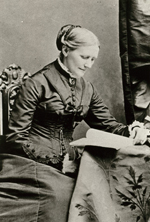
Lucretia Crocker was an American science educator. Crocker founded the Women’s Education Association in 1872.

Harriet Clisby was an English physician, women's rights activist, and founder of the Women's Educational and Industrial Union in Boston.
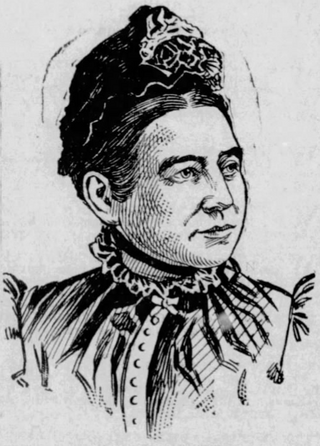
Maria E. Beasley was an American entrepreneur and inventor. Born in North Carolina, Beasley grew up with a strong interest in mechanical work and learned about the profession of barrel-making from her grandfather. Between 1878 and 1898, she patented fifteen inventions in the United States: these included a footwarmer, an improved life raft, and an anti-derailment device for trains; however, her primary success as an inventor rose from a specialty in barrel-making machines and processes. Beasley licensed a patent to the Standard Oil Company, exhibited her work at the World's Industrial and Cotton Centennial Exposition and the World's Columbian Exposition, and founded two companies for the design and manufacture of barrels.

Julia Colman was an American temperance educator, activist, editor and writer of the long nineteenth century. She served as superintendent of literature in the Woman's Christian Temperance Union (WCTU).

Alma Webster Hall Powell, also known as Alma Webster Powell or Alma Webster-Powell, was an American operatic soprano, suffragist, philanthropist, writer, film scenarist, inventor, and member of the Socialist Party.

Betsey Ann Stearns was an American inventor of the long nineteenth century. She is credited with developing a "Diagram and System for Cutting Ladies' and Children's Garments". The invention was first issued in 1864 and improved upon in 1867. It is described as being simple and accurate, easily learned, and economical.
{{cite book}}: CS1 maint: multiple names: authors list (link)